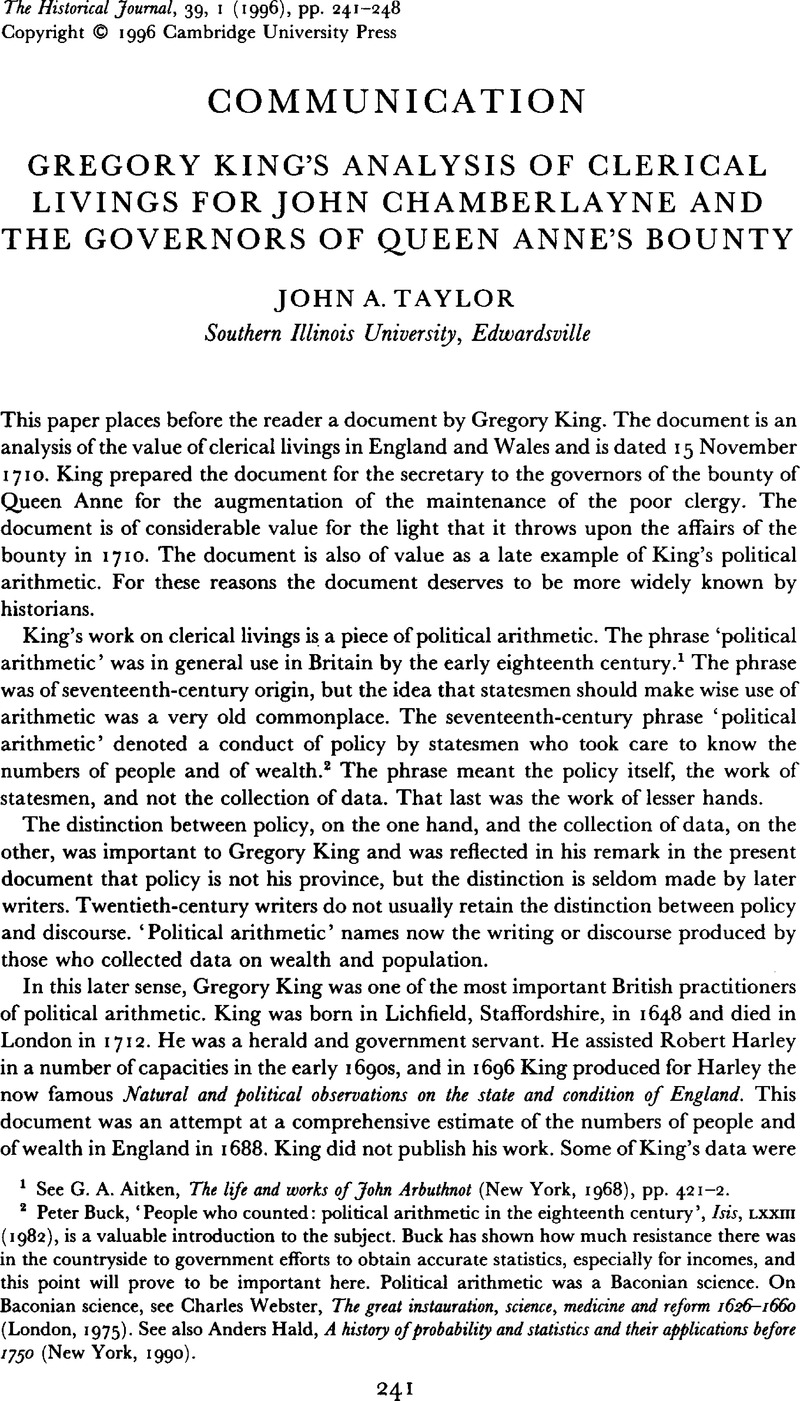Published online by Cambridge University Press: 11 February 2009

1 See Aitken, G. A., The life and works of John Arbuthnot (New York, 1968), pp. 421–2.Google Scholar
2 Peter, Buck, ‘People who counted: political arithmetic in the eighteenth century’, Isis, LXXIII (1982)Google Scholar, is a valuable introduction to the subject. Buck has shown how much resistance there was in the countryside to government efforts to obtain accurate statistics, especially for incomes, and this point will prove to be important here. Political arithmetic was a Baconian science. On Baconian science, see Charles, Webster, The great instauration, science, medicine and reform 1626–1660 (London, 1975)Google Scholar. See also Anders, Hald, A history of probability and statistics and their applications before 1750 (New York, 1990).Google Scholar
3 Charles, Davenant, Political and commercial works, ed. SirCharles, Whitworth (London, 1771), 5 vols.Google Scholar, see index under King. Davenant seems still to have regarded political arithmetic as calculation by those who govern. Davenant made the point in a letter dated 19 Oct. 1703, B.M. Add. MS 28055. His work was done for those who rule and not for ‘the great and little vulgar’.
4 Peter, Laslett (ed.) Works by J. Graunt and G. King (Westmead, 1973)Google Scholar. As the pages of this volume are not numbered consecutively, it is difficult to cite it. The volume contains the complete text of King's Natural and political observations, reprinted from the edition by George Chalmers.
5 I have tried to track this firm, and I presume that it is Meyers and Company, 80 New Bond Street, Mayfair W1.
6 Arbuthnot has been much studied. See Beattie, L. M., John Arbuthnot (New York, 1967), esp. pp. 326–46.Google Scholar
7 John, Chamberlayne, Magna Britannia Notitia: or, the present state of Great Britain with divers remarks upon the ancient state thereof (London, 1710), p. 27.Google Scholar
8 Best, G. F. A., Temporal pillars, Queen Anne's bounty, the ecclesiastical commissioners, and the Church of England (Cambridge, 1964), p. 525.Google Scholar
9 For a history of these matters, the reader should consult Alan, Savidge, The foundation and early years of Queen Anne's bounty (London, 1955)Google Scholar. See also Ian, Green, ‘The first five years of Queen Anne's bounty’, in R., O'Day and Heal, F. (eds.), Princes and paupers in the English church, 1500–1800 (Leicester, 1981), pp. 231–54.Google Scholar
10 John, Ecton, Liber valorum & decimarum, being an account of such ecclesiastical benefices in England and Wales as now stand charged with or lately were discharged from the payment of first fruits and tenths (London, 1723)Google Scholar. See also John, Bacon, Liber regis thesaurus ecclesiasticarum (London, 1736).Google Scholar